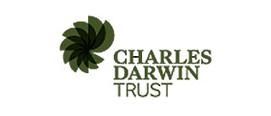Darwin, evolution and working scientifically
This list provides a range of activities to explain natural selection and also consider the development of a scientific theory.
To make the story more clear for students, events may not necessarily be related in chronological order. The list suggests suggests:
• Describing the evolution of species as we see it today.
• Artificial selection.
• Observing variations in nature.
• Natural selection and evolution.
• Communicating ideas.
Whilst this list provides a source of information and ideas for experimental work, it is important to note that recommendations can date very quickly. Do NOT follow suggestions which conflict with current advice from CLEAPSS, SSERC or recent safety guides. eLibrary users are responsible for ensuring that any activity, including practical work, which they carry out is consistent with current regulations related to Health and Safety and that they carry an appropriate risk assessment. Further information is provided in our Health and Safety guidance.
Wellcome Trust: Tree of life *suitable for home teaching*
The downloadable interactive Tree of Life video can be used to introduce students to Darwin’s theory of evolution by natural selection.
The video illustrates how new species have developed from common ancestors.
Whilst this is the culmination of Darwin’s work, by using this at the start of the topic it helps to set the context of the work to come.
You can pose the question, “How do we know this?”
Students can then work in groups to discuss the types of evidence they would need to gather to answer this question. How do scientists go about developing a theory of evolution? This is what Darwin did over 150 years ago.
After some time for discussion, collect ideas for the types of evidence or observations that would be needed. Keeping these on a flip chart or board allows them to be revisited as the topic develops. They can be compared with how Darwin worked.
Module 2: Artificial Selection
Darwin understood the process of breeders selecting animals with the traits that they desired. He saw that species could change over time. This was quite revolutionary at the time as species were thought to have been created by God and were unchanging or ‘immutable.’
It also introduces the idea of variation. Students are challenged to present and interpret information.
The materials suggest a visit to a farm, city farm, rare breeds centre, a natural history museum. Whilst it could be a valuable visit, it need not be undertaken.
The presentation introduces the evidence for changing species. Detailed teacher guidance is included with the materials.
Students can extend the activity by looking for and measuring variation in other species. This could include:
• Dried beans available from food shops.
• Leaf size and shape.
• Hand span, eye colour, hair colour etc.
Students can then consider which variations have a genetic basis, which are influenced by environment, and which by choice (dyed hair, cosmetic surgery in humans).
Peppered Moths
This animation and simulation describes the observation of natural selection in action using the example of the Peppered Moth. It can be viewed online, or saved for viewing off line.
The animation has four sections:
• Life cycle
• Impact of pollution
• Kettlewell’s experiments
• Bird’s eye view
It is useful to go through all sections as they tell the story of how the theory of natural selection was used to explain observations in nature.
The most accessible section is the Bird’s Eye View. This is a simple game in which students direct a bird to eat moths light or dark forms of the moth. They can see how the different forms are predated at different rates on light or polluted bark. Use this simulation to gather class results. Interpret in terms of which are the favoured forms in the different environmental conditions.
The section on Kettlewell’s work is particularly useful. It can be used to emphasise to students that this is the nature of science. Theories are tested against observations and measurements.
If all sections are to be viewed, create a set of questions for students to answer. This will help to guide their use of the simulation.
Peppered moths can be used to remind students about genetic crosses, if this topic has already been done. The light form is recessive to the dark from of the colour gene. Crosses between different moths can be explored. Stress though that this experiment looks at populations, rather than just individuals. Darwin had no knowledge of genetics. Even though Mendel was working around the same time, his results did not gain recognition until about 50 years later.
Revision like this can help to make connections between different topics and is especially useful with the move to terminal examinations.
Biodiversity and Evolution (Age 14 to 16)
These materials look at biodiversity and then the example of Darwin’s Finches in the Galapagos.
This activity will help to see how well students have understood the theory of natural selection.
You may wish to focus just on the Finches part of the resources.
The topic can be introduced with slides 13 to 17 of the presentation. The activity then models the effectiveness of beak size in gathering different food types. Full notes are given with the materials.
Following the activity move onto the question prompts on slide 18. Discuss the answers as a class.
Slide 21 then shows students the different finches and their food sources that Darwin observed when he visited the Galapagos.
You can pose the question: How did all these different types of finches develop on these isolated islands. Have students work in groups to see if they can explain using the steps in natural selection. Discuss progress with each group and provide prompt cards as necessary. Give them one at a time.
• Common ancestors a long time ago.
• Random variation in ancestors.
• Favourable variations survive and reproduce.
• Favourable features passed from one generation to the next.
• Over time new species evolve.
This activity really gets to the heart of whether students have understood the concept of natural selection. Groups should be given sufficient time to formulate their explanation.
Make sure that students realise that variation is random and that selection pressures enable the most favourable to survive and be passed on to the next generation. Many think of it the other way around. That is, because it would be good to have a beak that can pick up particular seeds, then they will be developed to do so.
Conclude with slide 23.
Darwin and Natural Selection *suitable for home teaching*
This resource contains a good, teacher-delivered presentation that summarises evolution by Natural Selection.
The presentation can be used to round off the topic or as a starter activity during a revision session. It summarises Darwin’s main observations:
• Species produce more offspring than survive to reproduce.
• Population numbers remain more or less constant.
• Members of the same species show variation.
• Certain characteristics are passed from one generation to the next.
Darwin’s letter to Wallace
This collection allows students to touch the world of Darwin and Wallace. It contains scientific letters from Alfred Russel Wallace and shows how scientists communicate and collaborate. Now by email of course!
This letter has been chosen as it shows a question being posed by Darwin to Wallace. It illustrates how Darwin was struggling to apply the theory of natural selection to observations in real life. He ponders why some caterpillars are brightly-coloured and conspicuous.
We would now interpret that as warning colours to show to predators that they are poisonous. Predators quickly learn to avoid such caterpillars and so it is a defence mechanism.
The letter can be used as a homework or short activity at the end of a session. Ask students to answer the question using their understanding of natural selection. It could be in the form a letter in reply from Wallace.
Inspire students by showing them the scan of the letter.
Skill 5.1 Writing a Summary
This activity is part of a suite that look at learning skills in science. It gives students an opportunity to practice their ability to make a summary.
It is worthwhile using the article on evolution and modifying the accompanying activity sheet (Word document version).
Rather than looking at three sources of information, it may be best to just use the evolution article. Allow students to suggest the questions they are going to address, or produce three suitable questions for them to answer using the article.
Depending on the learning outcomes required, students can be asked to just produce notes and a plan of their summary, or they can be asked to produce a fully-written draft of their summary.
This activity helps develop skills of interpreting written information and can be used to illustrate the type of abstract that is produced for a scientific paper.
Encourage students to write focussed summaries as part of their revision strategies. This is more productive than simply re-reading materials.
Ceri Evans' masterclass: evolution *suitable for home teaching*
The variety of games and challenges illustrated in the video gives some examples of effective ways to teach about one of the most important ideas in the history of philosophy and science.
The video looks at concepts such as variation, mutation, environmental change, natural selection and adaptation.





